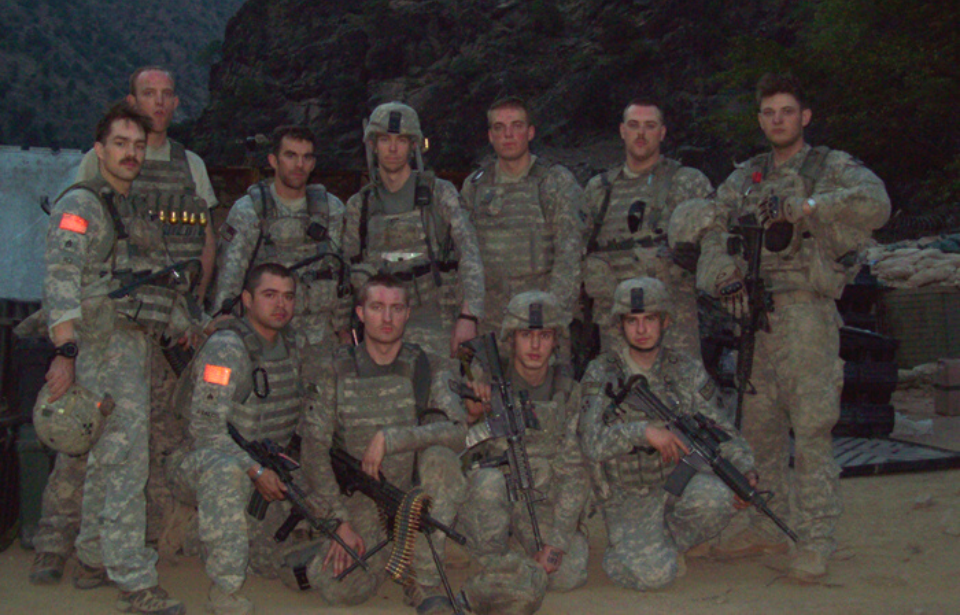Kamdesh wasn’t a good location for a combat outpost
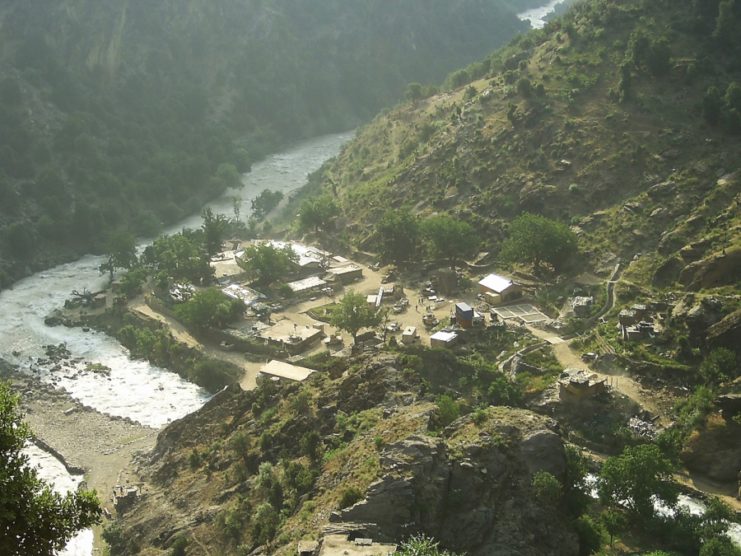
Established in 2006, Combat Outpost (COP) Keating was located in the Landai Sin Valley of Afghanistan’s Nuristan province. The site’s geography caused immediate concern among newly arriving soldiers, as the outpost was encircled by towering mountains, making it highly susceptible to attacks from elevated positions. Additionally, the rugged terrain of the nearby road used by Afghan forces necessitated helicopter resupplies at night.
Despite these obstacles, COP Keating’s placement was strategic due to its proximity to the Pakistani border, a critical zone for anti-coalition forces whose supply lines extended into Pakistan. Stationing allied troops in Kamdesh, where three valley systems intersected, was intended to disrupt the flow of weapons and insurgents from Pakistan.
The outpost also aimed to build relationships with the local population through development projects, which were considered part of a counterinsurgency strategy. However, Taliban forces remained active in the region. Three years after its establishment, COP Keating was considered ineffective due to its weak defenses and ambiguous mission, leading to its planned closure in August 2009.
Throughout its operational period, COP Keating endured frequent sniper and mortar attacks, which largely increased in 2009, with 212 incidents recorded in the final nine months. Further complicating matters were delays in the closure process due to logistical issues and rising tensions between US President Barack Obama and Afghan President Hamid Karzai. This extended the exposure of the Black Knight Troop stationed there, ultimately resulting in an unavoidable confrontation.
Battle of Kamdesh, minute by minute
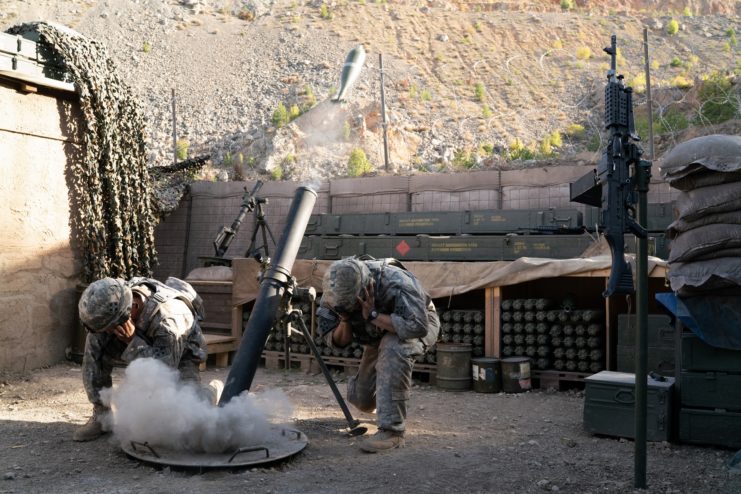
Around 3:00 AM on October 3, 2009, roughly 300 Taliban insurgents descended on Kamdesh, instructing locals to evacuate. After finishing their morning prayers, they launched an attack on COP Keating using Soviet-era B-10 recoilless rifles, DShK heavy machine guns, rocket-propelled grenades (RPGs), and mortar fire.
The attackers seemed to have a good understanding of the base’s layout and weaponry. Their main goal was to disable the base’s most powerful asset: the 120 mm mortar. While some insurgents pressed the attack on COP Keating, others targeted the nearby Observation Post Fritsche. By 6:03 AM, the post issued a critical distress call, “FRITSCHE AND KEATING IN HEAVY CONTACT.”
Just two minutes into the assault, the first American casualty occurred; Pfc. Kevin Thomson was shot in the face while defending the northernmost mortar pit. Shortly afterward, Sgt. Josh Kirk was injured by shrapnel from an RPG blast while preparing an AT4 anti-tank rocket, and was then fatally shot in the head by a sniper.
American troops were outnumbered and outgunned

Despite their courageous attempts to fight back from armored Humvees equipped with machine guns, the American soldiers found themselves overwhelmed by enemy numbers and firepower as their ammunition supplies ran low. Sgt. Vernon Martin was struck by gunfire, and shortly after, an RPG blast dislodged a .50 caliber machine gun from its mount, with the resulting shrapnel inflicting further injuries.
As Martin and another soldier took cover near a Humvee, Sgt. Justin Gallegos and Spc. Stephen Mace joined them. Lacking any means to repel the advancing Taliban, they retreated into the vehicle, their situation worsened by the Humvee’s disabled M240 machine gun. rendered inoperable. Spc. Ty Carter risked enemy fire to deliver ammunition to the stranded Humvee, but with COP Keating becoming increasingly exposed, the situation grew more critical.
Spc. Michael Scusa was fatally shot in the neck while sprinting from the barracks to reinforce another position. In an effort to protect his comrades trapped inside the Humvee, Staff Sgt. Clinton Romesha fired his M48 machine gun at the enemy, only to be wounded under the barrage of enemy fire.
Afghani guards fled as the fighting intensified
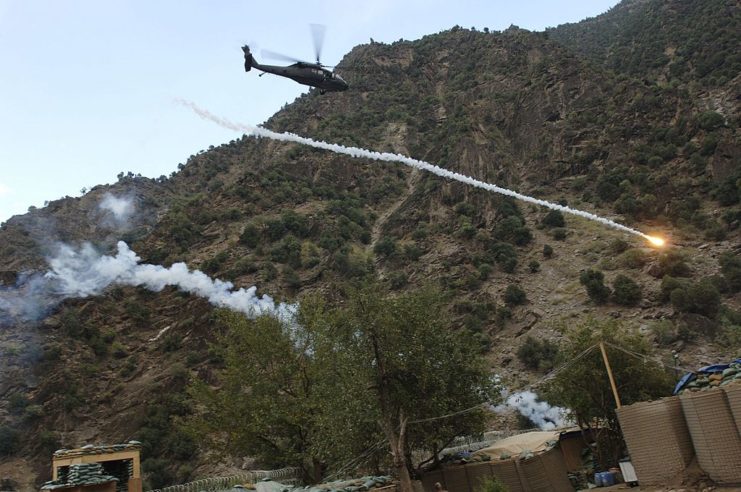
Forty-eight minutes into the Battle of Kamdesh, the Taliban had penetrated the outer defenses of COP Keating. Nearby Afghan National Army soldiers were instructed to maintain their positions, but ultimately they fled as the conflict intensified. American soldiers noticed that none of the Afghan troops remained; they had chosen to flee, hide, or loot equipment and supplies from the base during and after the assault.
The Taliban infiltrated the base, setting its primary structures on fire. An hour into the battle, the defenders of COP Keating fell back to secure two buildings while the rest of the base was overrun. As more enemy fighters poured in, the remaining US troops recognized the increasing risk of being overwhelmed. Lt. Andrew Bundermann began issuing orders to fortify the perimeter and concentrate firepower, while Romesha readied the soldiers with a final rallying call.
The small group planned two coordinated assaults. Sfc. Jonathan Hill agreed to lead his men toward the eastern side, while Romesha gathered others to join him on the western side to recapture the ammunition storage shed and the base’s main entrance. As they prepared, Boeing AH-64 Apaches arrived and commenced striking Taliban positions on the mountainside.
A final attempt to take back control of Combat Outpost Keating
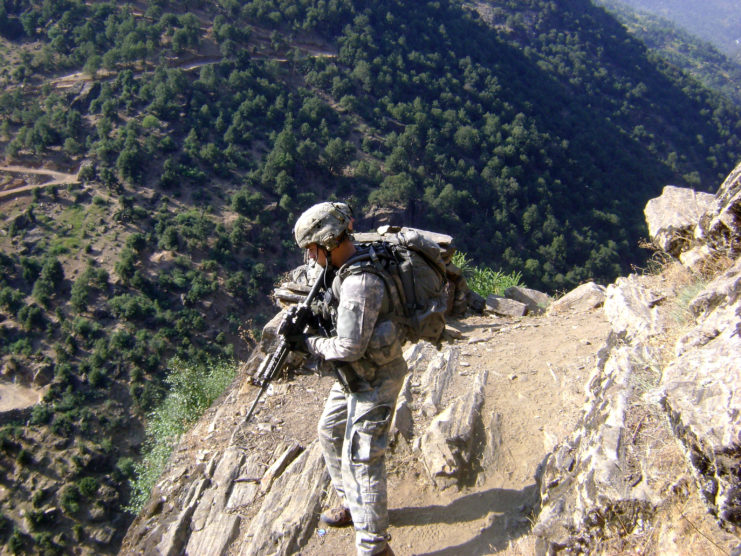
Romesha told his men, “We’re taking this b**** back,” as they crept forward and arrived at the ammunition storage shed. They grabbed grenades and set their sights on the Shura building, a mosque targeted by the invading Taliban fighters. The eight men faced hundreds of insurgents, but managed to clear the area and move to the dining hall, before reaching the Shura and securing COP Keating’s entrance.
While American air strikes continued to support the battle going on below, a new threat emerged: fire. A burning tree threatened the aid station, which was filled with wounded soldiers. Luckily, those still fighting cut it down with a chainsaw before it could fall. By 12:30 PM, the majority of the Taliban fighters were running from the area, accepting defeat.
The 1-32 Infantry Quick Reaction Force (QRF) arrived on the scene and dispatched the remaining insurgents – in all, 150 were killed in the battle. By 7:00 PM, COP Keating was secured. Eight American soldiers were dead, while another 22 were wounded. Within a matter of days, the remaining troops were evacuated from the base, which was subsequently destroyed by a Rockwell B-1 Lancer.
Reliving what happened during the Battle of Kamdesh
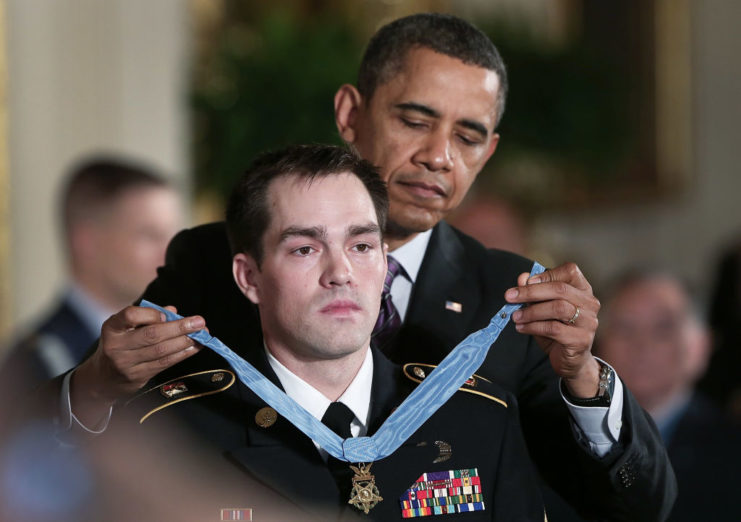
In 2013, Romesha and Carter received the Medal of Honor for their courage, bravery and leadership during the Battle of Kamdesh. Additionally, 27 Purple Hearts, nine Silver Stars, 37 Army Commendation Medals with “V” and 21 Bronze Stars were presented to others who fought. The Silver Stars awarded to Bundermann and Gallegos (the latter posthumously) were upgraded to Distinguished Service Crosses.
In 2020, a film about the attack on COP Keating was released, based on Jake Tapper’s best-selling book, The Outpost: An Untold Story of American Valor. When one of the battle’s veterans caught wind that his experience would be made into a movie, he felt concerned about how the battle would be portrayed.
Writing in an article for The New York Times, retired Lt. Col. Stoney Portis explained, “Over the years, I have learned that sharing the experience allowed many of us to put our emotions into words. That process helped us heal, but a bad rendering of the battle would leave us talking about what the movie got wrong instead of what actually happened.”
Portis and Maj. Chris Cordova went behind the scenes of The Outpost

Portis reached out to director Rob Lurie, who himself is a US Army veteran and graduate of US Military Academy West Point. He and fellow veteran, retired Maj. Chris Cordova, flew to Bulgaria to visit the film’s set. “When Cordova and I arrived on set, both of us were astounded. It looked just like our outpost on the day of the battle,” Portis wrote.
In his NYT piece, the veteran described walking into the replica aid station, where Cordova burst into tears. Nearly 10 years prior, his travel companion, a physician’s assistant at COP Keating, had worked for hours treating the wounded from the battle. One of those he’d cared for was 21-year-old Mace, whom Cordova kept alive for nine hours by giving him blood transfusions from other soldiers, including himself.
New! Want to become a trivia master? Sign up for our War History Fact of the Day newsletter!
More from us: Korengal Valley: Why the Region Is Nicknamed the ‘Valley of Death’
Portis described how he and Cordova felt watching The Outpost be filmed, reliving the most traumatic day of their lives. In a bizarre twist, the combat veteran realized the powerful nature of watching his story – to be a listener, instead of the speaker. As he explained, listening is one of the biggest parts of the healing process, as by “allowing soldiers to tell their story, by hearing their story, you are also part of the healing.”
